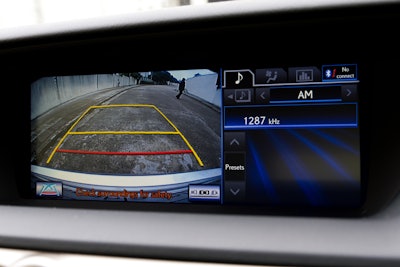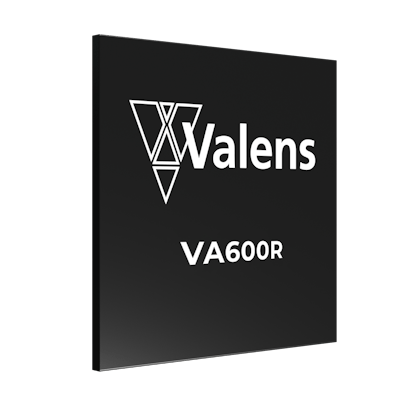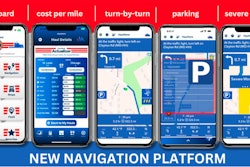
Gideon Kedem has traveled around the world, and in many countries – India, for example – he said heavy-duty commercial trucks are manned by two drivers: one who can jump out of the cab to guide the other driver as they back into those tight spots. In the U.S. however, manpower is an issue. With the driver shortage, it’s hard enough to fill a cab with one driver, much less two. That leaves the sole driver to climb out of his truck and walk the 53 feet to check for clearance. With an aging driver population and supply chain issues placing pressures on efficiency, this extra step also poses injury risks and time loss.
That’s where the backup camera comes in. While standard on every newly manufactured car in the U.S. since 2018, they are only a luxury in the heavy-duty space. That’s because of the magnitude of challenges that come with installing one on such a large vehicle, said Kedem, senior vice president and head of automotive business at Valens Semiconductor, a provider of semiconductor products for the transmission of uncompressed ultra-high-definition multimedia data.
Valens recently released its VA600R chipset designed to overcome those rear-view visibility challenges in the tractor trailer.

“There are, in the market, wireless solutions. If you use wireless, you can solve this challenge of crossing from the trailer to the tractor, but wireless is not very reliable – much more exposed for electromagnetic interference,” Kedem said. “You cannot afford that while the truck is backing in, suddenly there's a glitch, no picture, at exactly the same time where a small kid is running behind the truck. So reliability is an issue.”
Kedem is referring to the EMI environment where electromagnetic disturbance can interfere with the connection, whether that’s wireless or via a connected jumper cable. To overcome this, the Valens VA600R chip transmits data at a low frequency, helping keep the signal strong across the link, and also incorporates unique Digital Signal Processing (DSP) that enables resilient signal distribution.
[Related: Developers make headway on wireless backup cameras]
Because tractors and trailers are separate units, creating that space for electromagnetic interference, a rearview camera needs to bridge the gap over existing cable infrastructure to maintain the ability to attach and detach the trailer. Using the truck’s standard jumper cable and simple UTP cable, the VA600R maintains a high-speed, high-bandwidth link capacity that's enough to provide a video link from the back of the trailer to the cabin up front.
“Today, when you are connecting a trailer to a tractor, there are some standard cables already implemented on all trucks and trailers. But they have different functions, and you don't really have an available cable to transmit the video,” Kedem said. “We took the power cable, which is giving power to the trailer – giving the trailer the ability to have lighting around it, the blinker signals, the braking system; all those signals need power to come from the engine to the back of the trailer. So we are crossing this bridge here over a standard power cable. This is very challenging technology. It's a very unstable link; very noisy, so we're actually the only one who is able to deliver video over power.”
The other challenge, he said, is vehicle length. Increasing the distance data must travel increases the signal attenuation and the effects of EMI. The unique DSP, coupled with the low frequency, enables the VA600R to distribute high-speed, error-free data over distances of up to 131 feet/40 meters, while still maintaining a strong signal throughout the link without the use of expensive repeaters.
“If you combine all of this together, what we are giving is a cost-effective solution, using a very low-cost harness and reliable link because of our fine digital file to deliver a very strong noise-cancellation mechanism, basically securing error-free link and accessing the operational flexibility for the fleets,” Kedem said.
One of the challenges, too, is that the owner of the tractor often isn’t the owner of the trailer, so the connection factor is a problem when it comes time to drop and hook. Kedem said you can use a dedicated cable, but that becomes expensive, and also not every tractor and trailer is going to be equipped with connectors for those dedicated cables unless the tractor and trailer is owned by the same company that could afford to install a dedicated cable across all assets.
Valens’ use of the power cable skirts that issue.
“The fact that we are using connectivity over power is enabling mix and match. The trailer can disconnect from one truck to move to another tractor; you just connect the standard cables with the power and plug and play and you have the rearview system working,” he said. “If you were installing it with a dedicated separate cable, you wouldn't have this operational flexibility.”
Kedem said Stoneridge will be the first customer to receive the chip in the second quarter of this year, and he expects the company to take it into production toward the end of the year to be available to OEMs next year.












